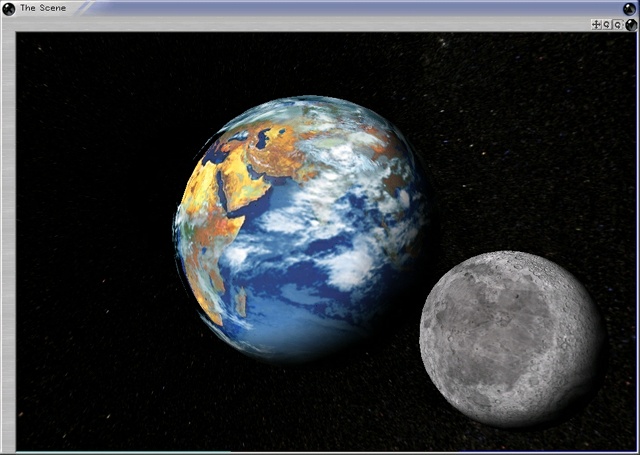 |

Submitted by , posted on 12 February 2001
|
 |

Image Description, by

Whilst there isn't much here that's particularly spectacular code
wise, I just thought this looked rather nice. This shot shows off the
new shader code in my 3d modelling program, Clayworks
(www.clayworks3d.com). It's a bit tricky to see in this shot but the sea
and rivers of the earth exhibit specular reflection whilst the ground
does not; it looks rather neat from glancing angles. The cloud layer is
just another sphere sitting around the earth (I know it's a bit too high
up). The diffuse lighting model is slightly modified from the standard
function to give a sharper difference between the light and shadow of
the earth. I used an exponential function to give the impression of a
long camera exposure to achieve this effect. The standard diffuse model
just doesn't look right for planets hanging in space.
Later, I hope to be able to generate the terrain data procedurally
(and hopefully add greater detail levels when zooming down on the planet
using a pseudo random number generator) and blending the ground terrain
from a set of textures tuned for terrain type, altitude, weather and
latitude so that equatorial regions have nice turquoise water and more
temperate climes have the familiar grey-blue stuff that I'm used to.
Tim
|
|

